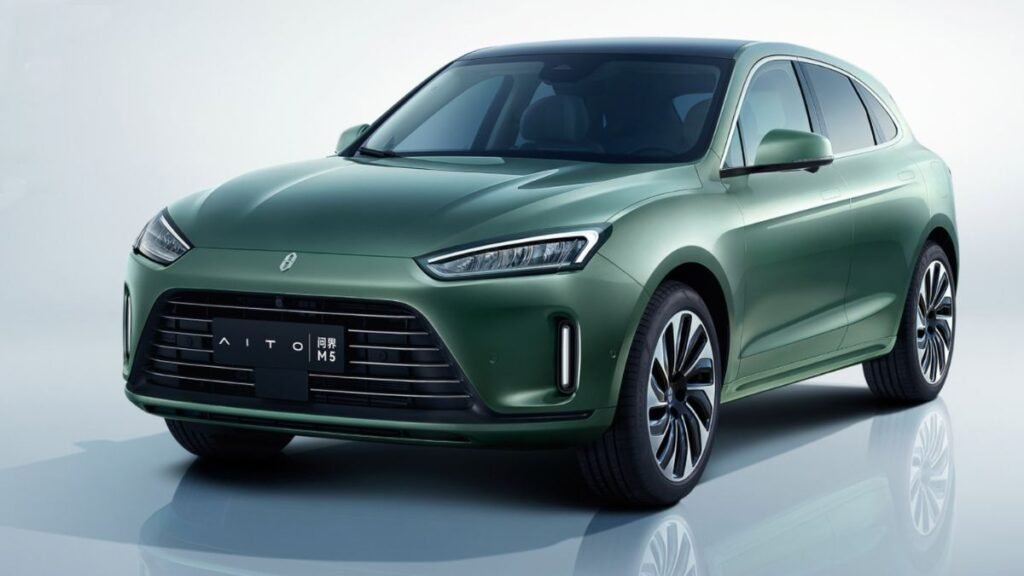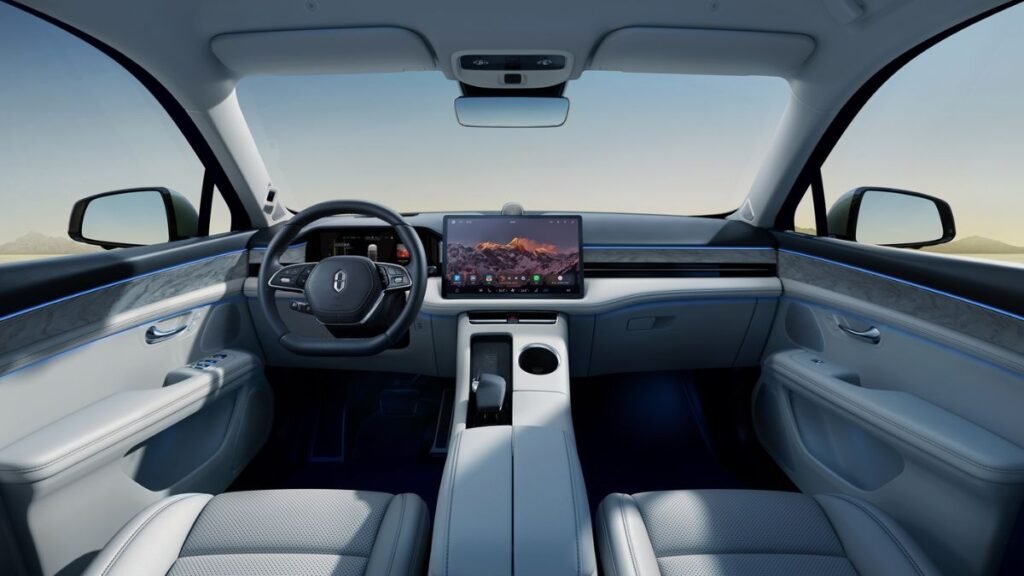
Huawei has recently introduced its first fully electric vehicle, the Wenjie M5 EV, as part of its AITO sub-brand. The Wenjie M5 EV is essentially an electric variant of the Wenjie M5, which initially debuted in December. It is worth noting that the Wenjie M5 itself is a modified and restyled version of the SF5, a collaborative effort between Huawei and Seres, an EV manufacturer based in California.
Previously, the AITO lineup consisted of two models, namely the Wenjie M5 and the Wenjie M7. These models were range-extended electric vehicles, utilizing a 1.5-liter turbocharged four-cylinder petrol engine to act as a generator. The engine charged a 40-kWh ternary lithium-ion battery, which powered either single or dual electric motors.
However, the Wenjie M5 EV takes a different approach by eliminating the internal combustion engine entirely and opting for a larger 80 kWh battery. Built on Huawei’s DriveONE platform, the base model known as the Standard Edition features a rear-mounted electric motor with an output of 272 PS (268 hp or 200 kW) and 360 Nm of torque. With this powertrain configuration, the Wenjie M5 EV can achieve a 0-100 km/h time of 7.1 seconds.
The Standard Edition of the Wenjie M5 EV is priced at 288,600 yuan (approximately RM186,429) after subsidies. Additionally, there is a Performance Edition available, which retails for 319,800 yuan (approximately RM206,530). The Performance Edition offers a dual-motor setup, providing all-wheel drive. The front electric motor generates 224 PS (221 hp or 165 kW) and 315 Nm of torque, while the rear motor produces 272 PS (268 hp or 200 kW) and 360 Nm of torque. Consequently, the Performance Edition achieves a quicker 0-100 km/h time of 4.5 seconds. However, it sacrifices some range compared to the Standard Edition, with a range of 552 km on a full charge according to the China Light-Duty Vehicle Test Cycle (CLTC), whereas the Standard Edition can travel up to 620 km. Both variants come equipped with Huawei’s Dynamic Adaptive Torque System (DATS).
Charging the Wenjie M5 EV takes approximately 10.5 hours from a 10-90% state of charge (SOC) using an AC charger with a power output of 7 kW. Additionally, the vehicle supports DC fast charging, which allows the battery to reach a 30-80% SOC in just 30 minutes when using a charger capable of 100 kW. It is worth noting that the charging connector used in China is the GB/T connector, which is similar to the European Type 2 connector but has different pin configurations and signaling.
In terms of dimensions, the Wenjie M5 EV is slightly longer than its range-extended counterpart, measuring 4,785 mm in length, which is an increase of 15 mm. The height of the vehicle is slightly lower at 1,620 mm (reduced by 5 mm), while the width (1,930 mm) and wheelbase (2,880 mm) remain unchanged.
Regarding the exterior design, the Wenjie M5 EV features a mostly closed-off front grille since it does not require an internal combustion engine. The vertical LED strips found on the Wenjie M5 are replaced with air curtains. Apart from these changes, the rest of the vehicle’s exterior closely resembles the range-extended version.

Inside the Wenjie M5 EV, the interior largely remains the same as the previous model, but with the addition of a wireless charger capable of charging two phones simultaneously, located on the center console. Notable technological features include a 10.25-inch digital instrument cluster and a 15.6-inch touchscreen infotainment system powered by Harmony OS, offering a wide range of connected features.
Both the Standard and Performance Editions of the Wenjie M5 EV come with a panoramic sunroof, LED exterior lighting, a 128-color interior ambient lighting system, automatic climate control with a PM2.5 air filter, Nappa leather upholstery, an NFC card key, a 19-speaker sound system, six airbags, and a comprehensive set of safety and driver assistance systems. These safety features include automatic emergency braking (AEB), blind-spot monitoring, adaptive cruise control with traffic jam assist, lane keep warning and assist, among others. The base option of the vehicle features 19-inch wheels, while the range-topping model boasts 20-inch wheels.
Conclusion
Huawei’s entry into the electric vehicle market with the Wenjie M5 EV marks a significant milestone for the company’s AITO sub-brand. With its transition from range-extended to all-electric powertrain, cutting-edge features, and an elegant design, the Wenjie M5 EV sets a strong foundation for Huawei’s foray into the world of electric mobility.
Also read about our post on How Rakuten Trade Can Help You Make Informed Investment Decisions









































